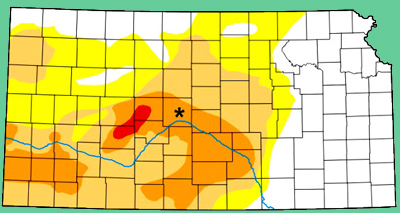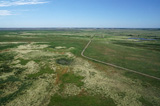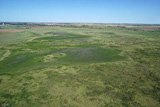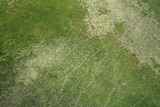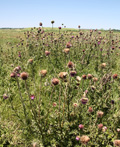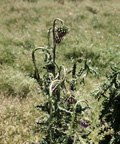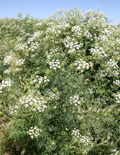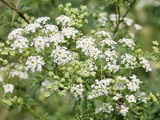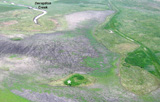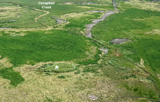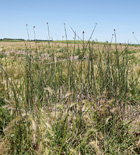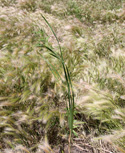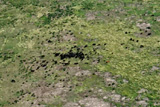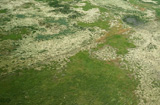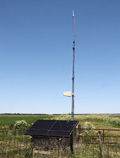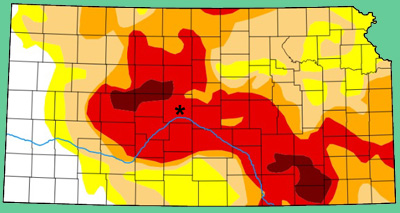 |
Cheyenne Bottoms (*) is extreme drought. |

| Looking toward the north-northeast over the delta of Deception Creek and dry pool. Overview (left) and closer shot (right). The creek holds water in a few spots, but the channel is dry as it enters the pool and mudflat area. |  |

| Looking toward the north-northwest over pool complex. Overview (left) and closer shot (right). Note the mosaic of mudflats, active vegetation, and dead cattail thatch (pale tan). |  |

| Looking southward (left) toward the Hoisington Gun Club in the distance, where water-filled pools are dammed on Blood Creek. View toward the west (left). Parking area and observation tower at upper left, and kite flyers in lower right corner. |  |

| Cattle graze in the southeastern sector; overview (left) and closer shot (right). Cattle are black spots toward the left sides, and their trails criss-cross the area. The rusty brown patch of vegetation is curly dock (Rumex crispus). | 
|

| Velvetleaf (Abutilon theophrasti)—whole bush (left), approximately 3 feet tall, and close-up of yellow flowers and seed pods (right). A common, invasive weed that came originally from India and southeastern Asia. The seeds may remain viable in soil for several decades. We first encountered velvetleaf here in the summer of 2012. |  |

| Foxtail barley, Hordeum jubatum (left), is a true grass that favors freshwater habitats throughtout North America. Great bulrush (right), also known as grey club rush (Schoenoplectus tabernaemontani), grows up through dead cattail thatch. It's highly desirable as wetland vegetation for wildlife. |  |

| Snow-on-the-mountain, Euphorbia marginata (left), is attractive, but certainly not desirable. It has effects similar to poison ivy, and cattle will not eat it on account of its bitter taste. Common or wild sunflower, Helianthus annuus (right), is the state flower of Kansas. | 
|




